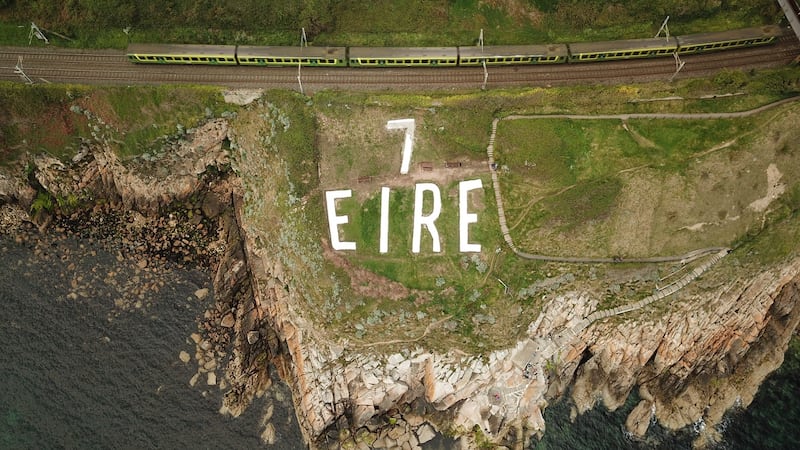Work has begun to uncover and restore the "Éire" sign at Howth Head, installed almost 80 years ago to warn fighter pilots not to drop bombs on Ireland during the second World War.
Once restoration is completed at the end of the summer, it will be the only Éire neutrality sign visible to passengers flying into Dublin Airport.
In 1943, 83 Éire signs, measuring 12 by six metres and picked out in stone and painted with limewash, were assembled on headlands along the coastline to indicate the State’s neutrality to passing pilots. Fewer than 30 remain intact, with just a small handful in a restored or visible condition.
The deployment of United States forces to Europe lead to the creation of the signs, Howth-based historian Philip O’Connor said.
“The Americans were coming into Britain and bringing their planes in for the bombing of Germany, and they had a lot of planes coming this way. However, they couldn’t cross Ireland because of neutrality so they asked could the coastline be delineated because they were losing planes in crashes,” he said.
The Government agreed to the installation of signs, which they said would indicate to all combatants they were flying over neutral territory.
“At first in 1943 it was just the word ‘Éire’ and then the Americans asked would there be any chance they would put a number with each one to help them navigate. So number six they would know is Howth and number 80 is Malin Head.”
Forgotten
After the war they became overgrown and were largely forgotten, Mr O’Connor said.
“Some are gone because they were on land used for farming. Others are quite inaccessible because they are on headlands – they were put on places pilots would notice them. About 25 have been revealed but only a handful have been restored.”
In the hot summer of 2018 a gorse fire on Bray head revealed its Éire sign, and the following year the Dalkey Éire sign was restored. This spurred Howth locals to seek the restoration of their sign and in February the National Parks and Wildlife Service granted permission to the Éire-6 Restoration Group to uncover and preserve the Howth sign.

“A group of us locally worked for 18 months to put an application together for the National Parks and Wildlife Service that encompassed an environmental impact study because it’s a very protected area,” local resident Lara O’Brien said.
“This particular sign we knew the location of, and that’s what got me interested in it. There was a fire in the late 70s that uncovered a partial letter. We came up as kids and tried to uncover it, but not very successfully, but there was a resurgence of interest once [the signs in] Dalkey and Bray were discovered.”
The restoration work, which involves removing gorse roots and soil and reinstating dislodged quartz stones, is being undertaken by the local community under the supervision of a plant ecologist.
“The sign had been buried for 74 years. It overgrew very rapidly because there’s a tremendous amount of gorse around,” Ms O’Brien said.
The work should be completed by early August. The sign is easily accessible from the summit car park, but once restored will also be a landmark for air travellers, Ms O’Brien said.
“In future when you’re flying home it will be the first thing that you see, and because of its location on the flight path it will be the only Éire sign you see.”




